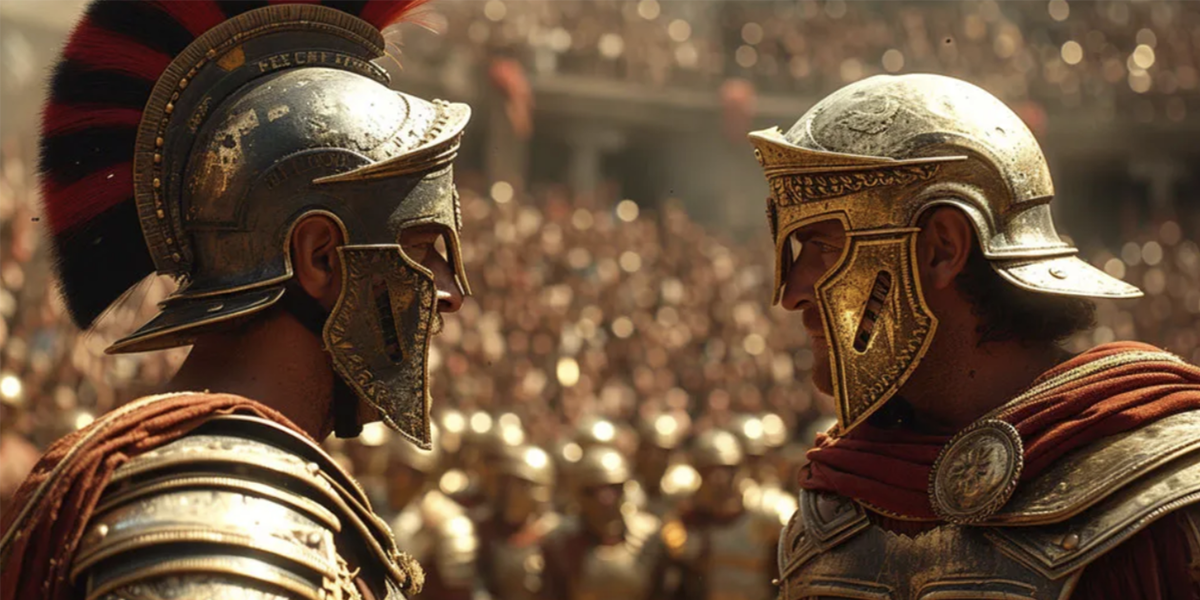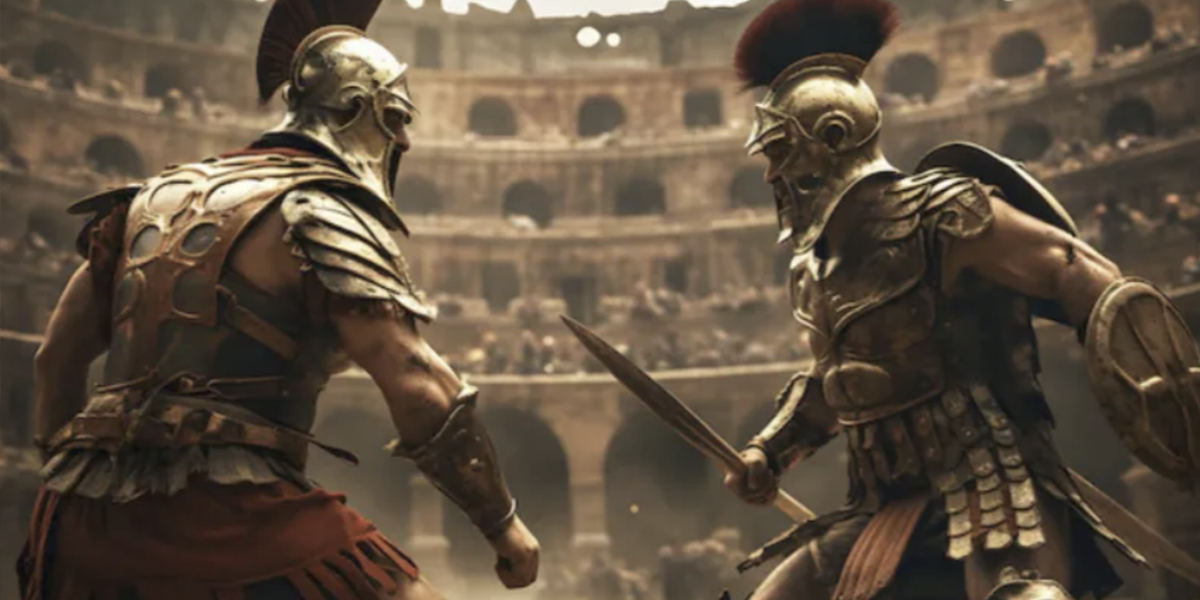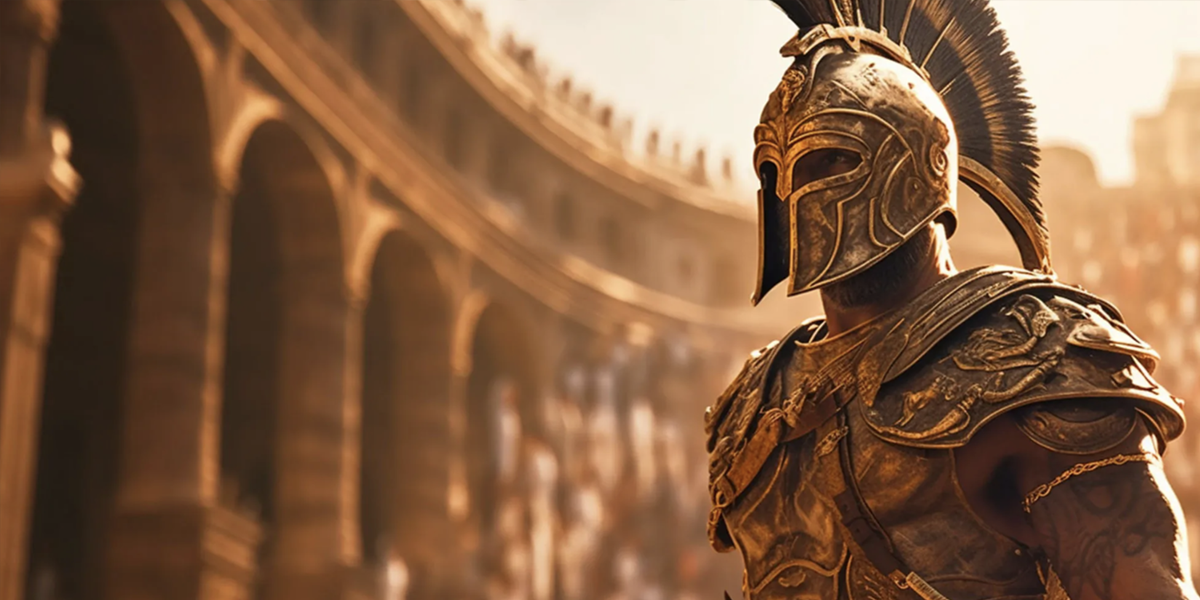Gladiators are among the most iconic figures of ancient Rome, symbolizing both the grandeur and brutality of Roman culture. These warriors fought in spectacular games that entertained the masses, displayed imperial power, and reflected complex social dynamics. This article delves into the world of Roman gladiators, exploring their origins, types, training, and the enduring legacy they left on history and popular culture.

Origins and Historical Background
The tradition of gladiatorial combat has its roots in early Roman history, evolving from funeral rites and religious ceremonies. The word “gladiator” comes from the Latin word gladius, meaning sword, emphasizing their role as armed combatants.
Early Beginnings
- Etruscan Influence: The practice likely originated from the Etruscans, an ancient civilization in Italy predating Rome. They conducted ritualistic combats during funerals, believing that bloodshed appeased the spirits of the dead and honored the deceased.
- First Recorded Games: The earliest recorded gladiatorial games in Rome occurred in 264 BCE, during the funeral of Junius Brutus Pera, where three pairs of slaves fought to honor his memory. These events, known as munera, were initially private ceremonies but gradually transformed into public spectacles.
Evolution into Public Entertainment
- Political Tool: By the late Republic, politicians used gladiatorial games to gain public favor and display wealth and power. Julius Caesar famously organized lavish games featuring hundreds of gladiators to boost his popularity.
- Imperial Era Expansion: Under the Roman Empire, especially during the reigns of emperors like Augustus and Trajan, the games became state-sponsored events held in massive arenas such as the Colosseum. They served not only as entertainment but also as demonstrations of Rome’s dominance and the emperor’s generosity.

Types of Gladiators
Gladiators were categorized based on their fighting styles, armor, and weapons. Each type had specific characteristics, creating diverse and exciting matchups that captivated audiences.
Common Gladiator Classes
- Murmillo: Recognized by their heavy armor, large rectangular shields (scutum), and a helmet adorned with a fish crest. They typically fought with a straight sword and were often pitted against lighter-armed opponents like the Thraex.
- Thraex (Thracian): Equipped with a small rectangular or circular shield and a curved short sword (sica). They wore crested helmets with a griffin motif and protective greaves, favoring agility and quick strikes.
- Retiarius: One of the most distinctive types, fighting with minimal armor, armed with a net (rete), trident, and a dagger. Their lack of protection made them vulnerable but allowed for swift movement, relying on entangling and spearing opponents.
- Secutor: Designed as the traditional adversary of the Retiarius, the Secutor wore a smooth helmet with small eye holes to prevent the net from catching. They carried a large shield and short sword, emphasizing close combat.
- Hoplomachus: Modeled after Greek hoplite soldiers, they carried a spear, short sword, and a small round shield. Their armor included a plumed helmet and protective leg gear, showcasing a balanced fighting style.
- Bestiarius: Specialized in fighting wild animals, often with minimal armor and various weapons like spears or whips. These combats, known as venationes, displayed human dominance over nature and added variety to the games.
Other Variations
- Equites: Gladiators who began fights on horseback, armed with spears and swords, transitioning to ground combat as the battle progressed.
- Provocator: Heavily armored fighters who wore a chest plate and fought with a large shield and sword, often used in duels that mirrored traditional Roman military combat.
- Dimachaerus: Wielded two swords simultaneously, requiring exceptional skill and coordination, providing a display of dexterity and offensive prowess.

Recruitment and Training
Gladiators came from diverse backgrounds and underwent rigorous training to prepare for the arena’s demands.
- Slaves and Prisoners of War: The majority were enslaved individuals or captured enemies, forced into gladiatorial schools (ludi) and trained for combat.
- Criminals and Condemned: Convicted criminals were often sentenced to fight in the arena, serving as a form of capital punishment and public spectacle.
- Volunteers (Auctorati): Surprisingly, some free men volunteered to become gladiators, seeking fame, fortune, or to pay off debts. This path offered potential glory and social mobility, though it came with significant risk and stigma.
Gladiatorial Schools (Ludi)
- Structure and Discipline: Ludi were managed by lanistae, trainers responsible for the gladiators’ preparation and well-being. These schools enforced strict discipline, with harsh training regimens and controlled living conditions.
- Training Regimen: Gladiators underwent comprehensive physical training, learning various combat techniques, weapon handling, and developing endurance. Diets were carefully monitored to maintain peak physical condition, often consisting of high-energy foods like barley and legumes.
- Medical Care: Despite the brutality of their profession, gladiators received medical attention to ensure quick recovery from injuries and maintain their fighting ability. Successful gladiators were valuable investments for their owners.
Life and Social Status
- Living Conditions: Life in the ludus was strict but provided for basic needs, including shelter, food, and medical care. Bonds often formed between gladiators, fostering a sense of camaraderie and shared identity.
- Public Perception: Gladiators occupied a complex social position. While admired for their bravery and skill, they were also seen as low-status individuals due to their association with slavery and violence. Successful gladiators could achieve fame and fan adoration, sometimes even attracting the attention of Roman elites and women.
The Gladiatorial Games
The games were elaborate events that served multiple societal functions, combining entertainment, political messaging, and cultural expression.
- Venationes: The morning sessions featured wild animal hunts and combats, showcasing exotic beasts and human prowess over nature. These displays included staged hunts, animal fights, and executions.
- Public Executions: Midday sessions often involved the execution of criminals and enemies of the state, serving as a deterrent and reinforcing law and order.
- Gladiatorial Combats: The afternoon was reserved for the main attraction — gladiator battles. These fights were carefully orchestrated, with matchups designed for maximum excitement and variety.
The Amphitheaters
- Colosseum (Flavian Amphitheatre): The most famous venue, inaugurated in 80 CE, could accommodate around 50,000 spectators. It featured advanced engineering, including retractable awnings, subterranean chambers, and elaborate stage mechanisms.
- Other Venues: Amphitheaters were spread throughout the Roman Empire, indicating the widespread popularity of the games. These structures varied in size and grandeur but served similar functions in local communities.
Spectacle and Ceremony
- Processions and Rituals: Games began with grand processions (pompa), featuring the participants, officials, and sometimes the emperor, accompanied by music and elaborate displays.
- Audience Engagement: The crowd played an active role, cheering for favorites and influencing outcomes. The famous “thumbs up” or “thumbs down” gestures were part of deciding a defeated gladiator’s fate, though historical accuracy of these signals is debated.
- Economic Impact: The games were costly endeavors, funded by the state or wealthy individuals. They provided economic stimulation through employment, trade, and tourism.
Social and Cultural Significance
Gladiatorial games were more than mere entertainment; they were integral to Roman society’s fabric, reflecting and reinforcing its values and structures.
- Emperor’s Power Display: Emperors used games to demonstrate their generosity, power, and connection to the populace. Lavish spectacles reinforced their status and distracted the public from political issues.
- Social Control: Providing free entertainment and food (bread and circuses) helped maintain social order by appeasing the masses and preventing unrest.
Religious and Cultural Aspects
- Ritualistic Elements: The origins in funeral rites imbued the games with religious significance, honoring gods and spirits through blood sacrifice and ritualized combat.
- Cultural Identity: The games celebrated Roman martial values such as courage, strength, and discipline, reinforcing a collective identity centered around military prowess and dominance.
Decline and Legacy
The decline of gladiatorial games was gradual, influenced by changing social, economic, and religious factors.
- Economic Strain: The immense cost of staging games became burdensome, especially as the empire faced financial difficulties and external threats.
- Christian Influence: As Christianity spread and became the state religion, the moral opposition to the violent and pagan nature of the games grew. Emperor Constantine and later emperors issued edicts limiting and eventually abolishing gladiatorial combats.
- Last Recorded Games: The final known gladiator fight occurred in 404 CE, after which the practice faded, though some forms of animal combats persisted longer.
Enduring Legacy
- Cultural Impact: The figure of the gladiator has endured as a symbol of strength, bravery, and defiance. Stories of gladiators like Spartacus, who led a significant slave revolt, continue to captivate imaginations.
- Modern Representations: Gladiators have been immortalized in literature, film, and other media, reflecting ongoing fascination with their world. Works like the film “Gladiator” (2000) showcase the blend of historical intrigue and dramatic storytelling.
- Historical Insights: The study of gladiators provides valuable insights into Roman society, including social hierarchies, entertainment culture, and the complexities of power and spectacle.
Gladiators hold a fascinating and complex place in history, embodying both the grandeur and the cruelty of ancient Rome. Their stories reveal a society that celebrated martial prowess and spectacle, using entertainment as a tool for political power and social cohesion. The legacy of the gladiators lives on, offering enduring lessons about human nature, culture, and the intricate dance between power and entertainment that continues to resonate in modern times.



